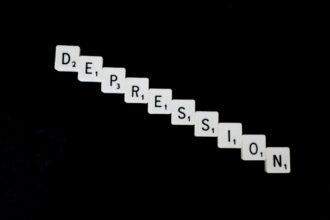Depersonalization Derealization Disorder (DPDR) is a complex psychological condition characterized by persistent feelings of detachment from oneself or one’s surroundings. You may find yourself feeling as though you are observing your life from outside your body, or that the world around you seems unreal or distorted. This experience can be disorienting and frightening, often leading to significant distress and impairment in daily functioning.
The disorder can manifest in various ways, including a sense of emotional numbness, a feeling of being disconnected from your thoughts or body, or perceiving the environment as dreamlike or foggy. The symptoms of DPDR can be triggered by stress, trauma, or anxiety, and they can vary in intensity and duration. For some, these feelings may come and go, while for others, they can become chronic.
It’s important to recognize that DPDR is not simply a symptom of another mental health condition; it is a standalone disorder that can significantly impact your quality of life. Understanding the nature of DPDR is crucial for those who experience it, as well as for their loved ones and mental health professionals who seek to provide support and treatment.
Key Takeaways
- Depersonalization Derealization Disorder (DDD) is a mental health condition characterized by feeling detached from oneself and the surrounding environment.
- There is a strong relationship between Borderline Personality Disorder (BPD) and Depersonalization Derealization Disorder, with individuals with BPD being more likely to experience DDD symptoms.
- Symptoms of DDD in BPD include feeling disconnected from one’s thoughts, emotions, and body, as well as experiencing a sense of unreality or distortion of the environment.
- The causes of DDD in BPD are complex and may involve a combination of genetic, environmental, and psychological factors.
- Diagnosis of DDD in BPD involves a thorough assessment of symptoms, medical history, and ruling out other potential causes, often requiring the expertise of mental health professionals.
The Relationship Between BPD and Depersonalization Derealization Disorder
Borderline Personality Disorder (BPD) and Depersonalization Derealization Disorder often coexist, creating a complex interplay that can complicate diagnosis and treatment. If you have BPD, you may experience intense emotional fluctuations, unstable relationships, and a distorted self-image. These symptoms can exacerbate feelings of depersonalization and derealization, making it difficult to establish a stable sense of self.
The emotional turmoil associated with BPD can lead to episodes of dissociation, where you feel disconnected from your thoughts or surroundings. Research indicates that individuals with BPD are more likely to experience dissociative symptoms, including DPDR. This relationship suggests that the emotional dysregulation inherent in BPD may trigger or intensify feelings of detachment.
Understanding this connection is essential for mental health professionals when developing treatment plans tailored to your unique experiences. By addressing both BPD and DPDR simultaneously, you can work towards achieving greater emotional stability and a more integrated sense of self.
Symptoms of Depersonalization Derealization Disorder in BPD

If you are living with both BPD and DPDR, you may encounter a range of symptoms that can be distressing and confusing. Common symptoms of DPDR include persistent feelings of detachment from oneself, where you might feel like an observer in your own life. You may also experience derealization, where the world around you seems unreal or distorted.
These sensations can lead to significant anxiety and fear, as you struggle to make sense of your experiences. In addition to these core symptoms, you might also notice cognitive difficulties such as trouble concentrating or remembering details about your life. This cognitive fog can further complicate your ability to navigate relationships and daily responsibilities.
The interplay between BPD and DPDR can create a cycle of emotional instability and dissociation, making it essential to seek professional help to address these overlapping symptoms effectively.
Causes of Depersonalization Derealization Disorder in BPD
| Cause | Description |
|---|---|
| Trauma | Experiencing trauma, such as physical or emotional abuse, can contribute to the development of Depersonalization Derealization Disorder in individuals with Borderline Personality Disorder. |
| Genetics | There may be a genetic predisposition to developing Depersonalization Derealization Disorder in individuals with Borderline Personality Disorder, as it can run in families. |
| Stress | High levels of stress or chronic stress can trigger or exacerbate symptoms of Depersonalization Derealization Disorder in individuals with Borderline Personality Disorder. |
| Substance Abuse | Abusing drugs or alcohol can increase the risk of developing Depersonalization Derealization Disorder in individuals with Borderline Personality Disorder. |
The causes of Depersonalization Derealization Disorder in individuals with BPD are multifaceted and often rooted in a combination of biological, psychological, and environmental factors. If you have experienced trauma or significant stress during formative years, these experiences may contribute to the development of both BPD and DPDR. The brain’s response to trauma can lead to dissociative symptoms as a coping mechanism, allowing you to distance yourself from overwhelming emotions or memories.
Additionally, genetic predispositions may play a role in the development of these disorders. If there is a family history of mood disorders or anxiety disorders, you may be at a higher risk for developing BPD and its associated symptoms, including DPDR. Understanding these underlying causes can empower you to seek appropriate treatment and develop coping strategies that address both the emotional dysregulation of BPD and the dissociative experiences associated with DPDR.
Diagnosis of Depersonalization Derealization Disorder in BPD
Diagnosing Depersonalization Derealization Disorder in the context of Borderline Personality Disorder requires a comprehensive evaluation by a mental health professional. If you suspect that you may be experiencing symptoms of DPDR alongside BPD, it’s crucial to seek help from a qualified therapist or psychiatrist who understands the nuances of both conditions. The diagnostic process typically involves a thorough assessment of your medical history, symptomatology, and any previous mental health diagnoses.
During the evaluation, the clinician will likely ask about the frequency and intensity of your depersonalization and derealization experiences. They may also explore how these symptoms impact your daily life and relationships. It’s essential to be open and honest during this process so that the clinician can accurately assess your situation and provide an appropriate diagnosis.
Once diagnosed, you can work together to develop a tailored treatment plan that addresses both disorders.
Treatment Options for Depersonalization Derealization Disorder in BPD

Treatment for Depersonalization Derealization Disorder in individuals with Borderline Personality Disorder often involves a combination of psychotherapy and medication management.
DBT focuses on teaching skills for emotional regulation, interpersonal effectiveness, distress tolerance, and mindfulness—skills that can help mitigate the symptoms of both BPD and DPDR.
In some cases, medication may also be prescribed to help manage anxiety or depressive symptoms that often accompany these disorders. Antidepressants or anti-anxiety medications may be considered based on your specific needs and symptom profile. It’s important to work closely with your healthcare provider to monitor the effectiveness of any prescribed medications and make adjustments as necessary.
Coping Strategies for Depersonalization Derealization Disorder in BPD
In addition to professional treatment, developing personal coping strategies can be beneficial in managing the symptoms of Depersonalization Derealization Disorder alongside Borderline Personality Disorder. Mindfulness practices can be particularly helpful in grounding yourself during episodes of detachment. Engaging in mindfulness exercises—such as deep breathing, meditation, or yoga—can help you reconnect with your body and surroundings, reducing feelings of disconnection.
Another effective strategy is journaling about your experiences. Writing down your thoughts and feelings can provide clarity and help you process your emotions more effectively. You might also consider engaging in creative outlets such as art or music, which can serve as powerful tools for self-expression and emotional release.
By incorporating these coping strategies into your daily routine, you can cultivate resilience and enhance your overall well-being.
Impact of Depersonalization Derealization Disorder on BPD
The presence of Depersonalization Derealization Disorder can significantly impact your experience with Borderline Personality Disorder. The dissociative symptoms associated with DPDR may exacerbate the emotional instability characteristic of BPD, leading to increased feelings of confusion and distress. You might find it challenging to maintain relationships or engage fully in daily activities when grappling with feelings of detachment.
Moreover, the interplay between these disorders can create a cycle where emotional dysregulation triggers dissociative episodes, which in turn heightens emotional instability. This cycle can lead to a sense of hopelessness or frustration as you navigate the complexities of both conditions. Understanding this impact is crucial for developing effective treatment strategies that address both BPD and DPDR simultaneously.
How to Support Someone with BPD and Depersonalization Derealization Disorder
If you have a loved one who is struggling with both Borderline Personality Disorder and Depersonalization Derealization Disorder, providing support can be challenging yet essential. One key aspect is to foster open communication; encourage them to share their feelings without judgment. Listening actively can help them feel validated and understood during difficult moments.
Understanding the symptoms and challenges associated with BPD and DPDR will enable you to respond more effectively when they experience distressing episodes. Encouraging them to seek professional help while offering your support can make a significant difference in their journey toward healing.
Research and Development in Understanding Depersonalization Derealization Disorder in BPD
Ongoing research into Depersonalization Derealization Disorder within the context of Borderline Personality Disorder is crucial for advancing our understanding of these complex conditions. Studies are exploring the neurobiological underpinnings of dissociation, aiming to identify specific brain mechanisms involved in DPDR experiences. This research could lead to more targeted treatment approaches that address the unique needs of individuals with both disorders.
Furthermore, researchers are investigating the efficacy of various therapeutic interventions for managing DPDR symptoms in those with BPD. By examining different treatment modalities—such as cognitive-behavioral therapy (CBT), mindfulness-based approaches, and pharmacological options—scientists hope to develop evidence-based guidelines that improve outcomes for individuals grappling with these intertwined conditions.
Moving Forward with Understanding and Managing Depersonalization Derealization Disorder in BPD
Navigating the complexities of Depersonalization Derealization Disorder alongside Borderline Personality Disorder can be daunting; however, understanding these conditions is the first step toward effective management. By recognizing the relationship between BPD and DPDR, identifying symptoms, exploring treatment options, and implementing coping strategies, you can take proactive steps toward improving your quality of life. As research continues to evolve, there is hope for more effective treatments that address both disorders comprehensively.
Remember that seeking support from mental health professionals is vital on this journey; they can provide guidance tailored to your unique experiences. With time, patience, and the right resources, it is possible to move forward with greater understanding and management of both Depersonalization Derealization Disorder and Borderline Personality Disorder.
Depersonalization-derealization disorder (DPDR) and borderline personality disorder (BPD) are both complex mental health conditions that can significantly impact an individual’s perception of reality and emotional regulation. An insightful article that delves into the nuances of these disorders can be found on Unplugged Psych. This resource provides a comprehensive overview of the symptoms, causes, and potential treatment options for both DPDR and BPD, offering valuable information for those seeking to understand these conditions better. For more detailed insights, you can read the full article by visiting Unplugged Psych.
LEARN MORE About Unmasking the Mysteries Behind Depersonalization and Derealization
FAQs
What is depersonalization derealization disorder (DDD)?
Depersonalization derealization disorder (DDD) is a mental health condition characterized by feeling detached from oneself (depersonalization) and feeling detached from the world around them (derealization).
What are the symptoms of depersonalization derealization disorder?
Symptoms of DDD may include feeling like an outside observer of one’s thoughts, feelings, and body (depersonalization), feeling like the world is unreal or distorted (derealization), and experiencing emotional numbness.
What is borderline personality disorder (BPD)?
Borderline personality disorder (BPD) is a mental health condition characterized by unstable moods, behavior, and relationships. Individuals with BPD may have a distorted self-image and struggle with impulsivity and intense emotions.
What is the relationship between depersonalization derealization disorder and BPD?
There is a high comorbidity between depersonalization derealization disorder and BPD, meaning that individuals with one condition are more likely to have the other. Both conditions involve disturbances in self-perception and emotional regulation.
How are depersonalization derealization disorder and BPD treated?
Treatment for depersonalization derealization disorder and BPD may include therapy, such as cognitive-behavioral therapy (CBT) and dialectical behavior therapy (DBT), as well as medication to manage symptoms. It is important for individuals to work with mental health professionals to develop a personalized treatment plan.




